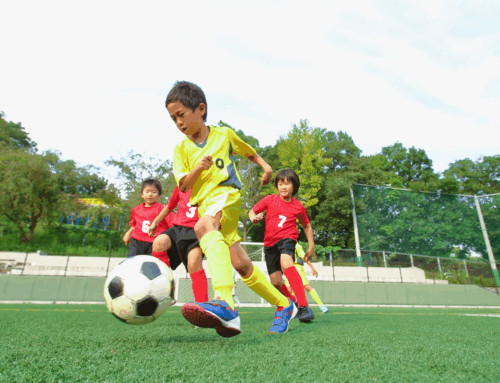Get our exclusive report. Download the iSport360 Club Switching Report Here – For Club Admins, Rec Leaders and Coaches.
8 Lacrosse Drills for Beginners
There are various lacrosse fundamentals that are important for every beginner to learn. Here are 8 lacrosse drills for beginners. Good lacrosse drills are vital to everyone who plans to learn how to properly play lacrosse. Whether this is through youth lacrosse drills or adult lacrosse drills. It is important to practice the sport to improve the quality of your performance. This article will go through some fun lacrosse drills for beginners that everyone new to the sport should be practicing on and off the field, as well as some lacrosse practice equipment that Trigon Sports provides to make your learning experience simpler.

WHY BEGINNER LACROSSE DRILLS ARE IMPORTANT
There are numerous lacrosse drills for beginners that are essential to practice. Lacrosse doesn’t start and end with passing and catching. Once you have your lacrosse gear, there are many aspects of the game that should be learned. Taking lacrosse lessons for beginners can hugely improve your skills in the sport. By learning some of these drills, you can better prepare yourself to play the sport the right way. If you are teaching lacrosse to beginners, you’ll want to instill some basic skills in your athletes. These skills will help them once they become more experienced in the game. These are some lacrosse beginner drills that will help you whether you are a new player or a coach.
LACROSSE CATCHING DRILLS
There are many different types of lacrosse catching drills that you should be practicing daily. Aside from basic catching and passing with a stationary partner, practice these simple skills. There are simple practices, like tossing and catching while running parallel to a partner down the field. Using a practice lacrosse goal, work on acting as a goalie. This will also help you develop your catching skills.
Another catching drill that can be practiced involves misguided passes, which are passes that are typically out of reach and more difficult to catch. Practicing these can prepare you for any erratic tossing patterns a teammate may have. The same goes for bad-pass drills, which involve your partner throwing the ball intentionally to make it more difficult to catch.
You can also practice cross-handed catching drills by moving the stick right to throw and left to catch without switching hands. A final catching drill that is important to practice is wall-bound and rebounder drills, which allows you to practice at home by yourself. Using a pitchback rebounder or bounce back target is perfect for this practice.
LACROSSE DEFENSIVE DRILLS
Learning defense drills is integral to becoming a skilled lacrosse player. One type of defense drill and footwork drill is known as zigzag 1-on-1, in which cones are set up in a zigzag pattern. You can then navigate your way through the cones while keeping your stick in line with the way you are moving. This drill helps you learn how to navigate through opponents during a game.
It is also important to practice different types of checks to take the ball from your opponent. Practice getting rid of the ball quickly by passing it to other teammates to prevent the ball from being stolen from you. A “monkey in the middle” lacrosse drill can also be helpful when practicing defense. Fundamental defense methods require good footing and body positioning by the players in front of the goalie.
LACROSSE PASSING DRILLS
Catching drills can help improve your skills in passing. However, there are some additional things you should be working on when you’re practicing your passing. Passing drills emphasize the importance of moving your feet while you are passing. You can also practice triangle passing drills, where three players stand in a triangle and pass the ball between each other.
LACROSSE CRADLING DRILLS
Understanding how to cradle the ball is important in lacrosse, as it allows you to run past players and get into a shooting position. You should start by practicing with a side-to-side cradling motion while standing in front of the mirror so that you can observe your form and make adjustments where it is necessary. Practice two-handed cradling down the field before you switch to one-handed. Have someone lightly pressure you on the field while you are practicing cradling once you have practiced on your own enough.
LACROSSE SHOOTING DRILLS
Begin shooting drills by standing 10 yards away from the goal and practicing shots in a stationary position with both hands. As you get better at this, add motion to your practices by running toward the goal, shooting toward the opposite corner of the goal, etc. To make shooting drills more difficult, you can add targets such as cones to improve the shooting accuracy. You can also use a goal target for this drill.
LACROSSE DODGING DRILLS
Dodging drills are important for strengthening your lacrosse skills. Similar to a defense drill, a dodging drill can be performed by stationing cones and performing a different dodge at each cone. Practice against a defender by using different dodging skills such as split dodge, face dodge and roll dodge.
Combine dodging drills with shooting drills to achieve the best results. This will help you learn to dodge a defender while you are still shooting on the goal as you would need to in a real game.
LACROSSE GROUND BALL DRILLS
One ground ball drill can be performed by rolling a ball out and having two players run to see who can catch it first. Practice scooping ground balls from various different angles. You can also drop the ball directly between two players to see who can catch it fastest. It is important to practice “box out” drills in which a player uses their hips, rear, etc. to push their opponent away from the ball.
LACROSSE CLEARING DRILLS
Goalie drills can improve your performance in various aspects of the game. Typical clearing drills involve having defenders and middies in line near a goalie. One player at a time will run to the right side while the goalie passes them the ball, while the second player runs to the middle and is passed a ball and the third player runs to the left and is passed a ball. The drill repeats itself after this. Crossfield passes should also be practiced along with clearing drills in the event that the ball needs to be cleared by passing it to a teammate on the far side of the field.
To see the original post, click here. And for more on iSport360 and how we help make players better lacrosse players, click here.
Learn more or request a demo of our youth sports software that is helping teams improve communication, organization and player development.
March 19, 2022





